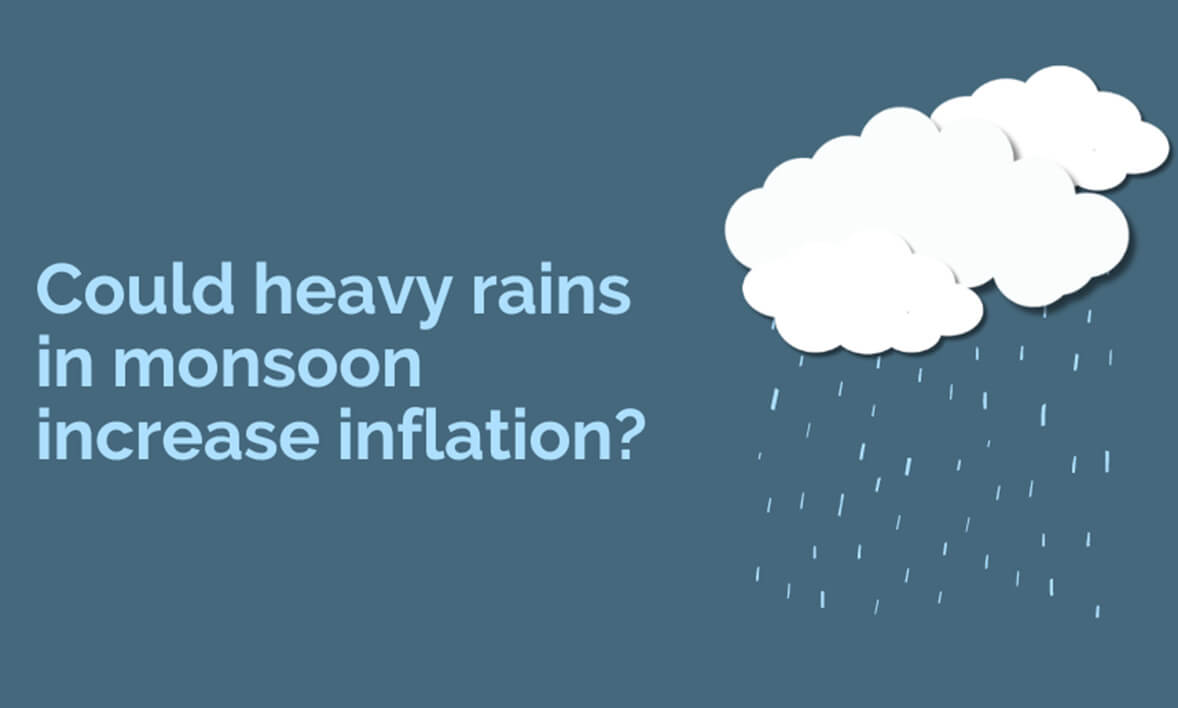Interest Rates may Stay High as Monsoon could Stoke Inflation
Just as one saw inflation cooling and coming close to the RBI target of 4% comes news of floods maiming life, limb crops and property in North India.
Despite a higher base in June last year, retail inflation for June 2023 showed an unexpected jump to 4.8%, up from 4.3% in May. Talk about throwing a wrench in the works!
Food Inflation Takes Centre Stage
The culprit behind the rise is none other than our everyday essentials - food. Retail food inflation climbed from 2.96% year-on-year (YoY) in May to 4.49% in June.
The simple YoY measure does not fully capture the enormity of the situation. To truly understand the impact, it's crucial to delve into month-on-month inflation.
Vegetable prices went through the roof, shooting up by a whopping 12.2% within a month.
Tomatoes turned out to be the real bad apples, with their prices increasing by a staggering 64.5% in June from a month ago.
Social media went viral with memes of finance companies offering loans to buy tomatoes.
Not to be left behind, the cost of pulses went up 3.4% MoM, while egg prices went up 5.5%.

Spicy lift from tomato, Chillies and Cumin
Also, inflation is expected to rise further due to rising prices of tomatoes, chillies and cumin.
The RBI is also keeping a watch on prices of cumin, or jeera, the most commonly used spice in Indian cooking.
There are reports that India is considering a ban on exporting rice as local prices are expected to rise further.
It will be wise to monitor food prices as El Nino drives temperatures up and hits crop output.
Experts see the trend of higher food prices to continue, with July's CPI inflation possibly reaching 5.5% YoY, largely due to perishable food prices.
I told you so, could be RBI's Stance
The Reserve Bank of India did not raise interest rates to quell inflationary expectations. The current conditions could well provide the central bank with the room to say, “I told you so.”
RBI, having the foresight, is keeping a close eye on these expectations.
However, don't expect any drastic moves from the central bank just yet. Despite the higher food inflation, RBI is unlikely to raise rates, primarily because it had already anticipated it.
Government Intervention
Here's where it gets tricky. The monsoon, known for its unpredictability, has been causing a ruckus in North India. If it affects crops, food inflation could well and truly entrench itself.
On the bright side, the government isn't sitting idle. They've got their game face on, striving to keep inflation under control. From procuring tomatoes at discounted rates from surplus states to imposing stock limits on pulses and exploring a ban on rice exports, the government is leaving no stone unturned.
What should investors do?
Inflation, like an uninvited guest, is here and making its presence felt. Even in the face of rising inflation and firm interest rates, there are ways to make the financial markets work in your favour.
This blog column has consistently advocated the “laddering up” approach to fixed-income investments.
As far as equity investment is concerned, companies with pricing power may be able to maintain margins. Those who lack pricing will have to absorb the cost and take a hit on margins. Consequently, stock prices could come down.
Continue with the "laddering up" approach in bonds. By doing so, you can hedge against risks and potentially benefit from any uptick in interest rates.

